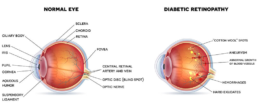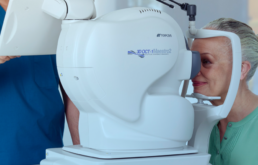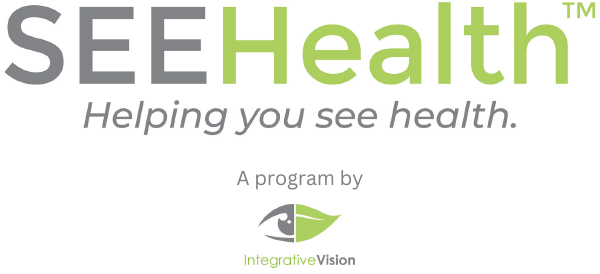November is Diabetic Eye Disease Awareness month and we’ve compiled a quick rundown on what Diabetic eye disease is and possible treatments.
The now common maxim of “Don’t get Diabetes, you’ll go blind” may seem dramatic out of context, but vision is a great concern for optometrists when working with Type 1 and 2 Diabetic patients.
So why exactly is this the case?
Diabetic eye disease is a group of eye problems that people with diabetes may face as a complication of the disease. Anyone with diabetes is at risk for vision loss or blindness from diabetic eye disease.
Diabetic Retinopathy (DR) is one of the most common causes of irreversible blindness in adults with both Type 1 and Type 2 diabetes and is caused by microvascular damage to the retina. Other diabetic eye diseases include diabetic macular edema, cataract, and glaucoma. According to the DivFuss study, DR remains a leading cause of visual impairment and blindness worldwide.
Despite clinical trials showing that tighter control of blood glucose and blood pressure reduces the risk of microvascular diabetes complications, and despite tremendous advances in the clinical management of diabetic eye disease, rates of DR in the USA have increased by 89% over the last decade.

Unfortunately, diabetic eye disease has no warning signs, but early detection and timely treatment can help reduce the risks. An annual, comprehensive dilated eye examination is one of the best ways to detect early signs of diabetic eye disease.
Retinopathy Symptoms
- Seeing spots or floaters.
- Blurred vision.
- Having a dark or empty spot in the center of your vision.
- Difficulty seeing well at night.
Detection and Treatment
At Integrative Vision we have the latest diagnostic technology right on site to scan, detect and diagnose most common eye ailments. In the case of scanning for Diabetic Retinopathy we rely on the OPTOS Daytona and the OCT Maestro 2 machines. These give us in depth scanning to identify specific eye conditions in the macula that would otherwise go uncaptured.
Your retina (located in the back of your eye) is the only place in the body where blood vessels can be seen directly. This means that in addition to eye conditions, signs of other diseases (for example, stroke, heart disease, hypertension, and diabetes) can also be seen in the retina. Early signs of these conditions can show on your retina long before you notice any changes to your vision or feel pain. While eye exams generally include a look at the front of the eye to evaluate health and prescription changes, a thorough screening of the retina is critical to verify that your eye is healthy.

Diabetic Retinopathy and Supplements
The good news, however, is that most of the symptoms are preventable. With discipline, even the most cases are completely manageable. In fact, in some cases — with early detection and diagnosis — and specifically according to the DivFuss study, incorporating key supplements in treatment has actually helped improve visual function in diabetic patients within six months.
Some of these supplements include vitamin C, D3, E, zinc, EPA, DHA, alpha-lipoic acid, CoQ10, mixed tocotrienols/tocopherols, zeaxanthin, lutein, benfotiamine, N-acetyl cysteine, grape seed extract, resveratrol, turmeric root, green leaf, pycnogenol.
Ultimately, the best way to diagnose and treat Diabetic related eye conditions is to get a thorough dilated eye examination from your optometrist.

Dr. Neda Gioia, O.D. FOWNS, founder of Integrative Vision in Shrewsbury, New Jersey, one of the first combined functional medicine and optometry offices nationally. She has 22 years of experience in eye care that spans the country. She discovered the importance of whole-body health and the power of the body to heal itself with proper nutrition and lifestyle.
While she was always passionate about delivering exceptional eye care as an optometrist, she realized that there was a better way. She believes this whole-body approach is the best way to protect and preserve your eye health life.



